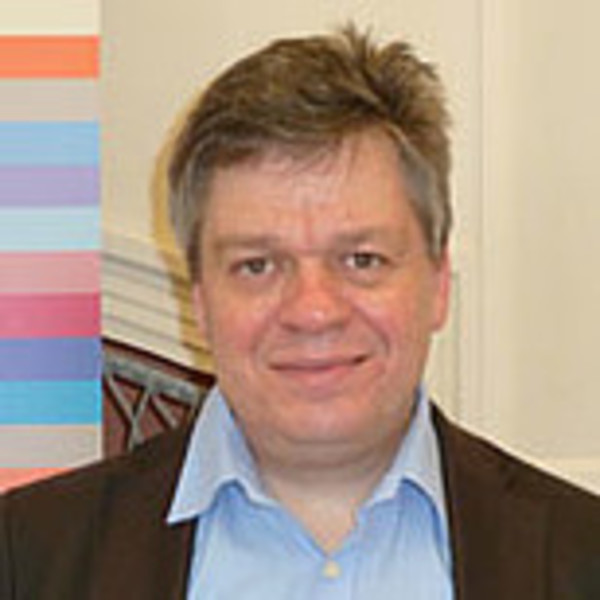
April 2013 - September 2013
Mail juergen.heyde(at)geschichte.uni-halle(dot)de
PD Dr Jürgen Heyde came to the Imre Kertesz Kolleg Jena as a fellow in May 2013. Prior to that he worked on the DFG (German Research Foundation) project Der "Ghetto"-Begriff in der polnisch-jüdischen Historiographie und Publizistik 1868-1918. Eine begriffs- und kommunikationsgeschichtliche Untersuchung (The ‘Ghetto’ as a concept in Polish-Jewish historiography and journalism 1868–1918. An investigation of conceptual and communications history) at Martin Luther Universität Halle-Wittenberg. He began to work as a research associate at the same university in 2003 and was awarded his habilitation in 2009. After completing his PhD at the Freie Universität Berlin, he was a research associate at the German Historical Institute in Warsaw from 1998 to 2003. He studied Eastern European history, Polish/Slavonic studies and medieval history from 1987 to 1993 in Giessen, Mainz, Warsaw, and Berlin.
From programme to politics. Narratives of action in anti-Semitic publications in Poland 1880–1939
This project examines the relationship between anti-Semitic writers and their readers. It shows how the former imagined, constructed, and guided an anti-Semitic in-group (or we-group) through “narratives of action” in Poland between 1880 and 1939. It is based on the assumption that anti-Semitic polemics were essentially directed not at a Jewish audience (as the Jews were perceived as the out-group), but served first and foremost to confirm the followers of anti-Semitic writers in their opinions and urge them to participate in the political, social, and economic agenda set forth by these writers.
By “narratives of action”, I mean any argument that responded to the questions “what should be done with the Jews” and “who should do something” in order to “solve the Jewish question”. Such narratives provoked into action by proposing more or less concrete measures and defining the actors that would carry them out. They helped anti-Semitic writers build up a group of followers and connect to the “masses”, thereby strengthening their status as leaders.
The project analyses the evolution of these “narratives of action” in Polish anti-Semitism from the last quarter of the nineteenth century to the outbreak of the Second World War. It examines the historical and discursive contexts of these narratives, the image they convey of the in-group, and the relationship they propose between the author as leader and his readers as followers or the “masses”.
By focussing on the interaction between anti-Semitic authors and their followers, the project highlights a core aspect of the development of modern anti-Semitism: the evolution of anti-Semitism into a social and political movement through a process of communication.
Member of the editorial boards of the following journals:
Memberships
Geschichte Polens (Beck’sche Reihe; 2385), München, 2011.
Bauer, Gutshof und Königsmacht. Die estnischen Bauern in Livland unter polnischer und schwedischer Herrschaft 1561–1650 (Quellen und Studien zur baltischen Geschichte; 16), Köln/Weimar/Wien, 2000.
Transkulturelle Kommunikation und Verflechtung. Die jüdischen Wirtschaftseliten in Polen vom 14. bis zum 16. Jahrhundert (im Druck).
Das Leben auf dem Lande im Baltikum. 11 Beiträge zum 16. Baltischen Seminar 2006, Lüneburg, 2012.
Żydzi i mieszczanie w Polsce przedrozbiorowej. Materiały z konferencji zorganizowanej przez Niemiecki Instytut Historyczny w Warszawie we współpracy z ŻIH i unwersytetem w Haifie, Warszawa 29 IX – 1X 2002 r. [Juden und Bürger im Alten Polen. Materialien einer Konferenz, die vom Deutschen Historischen Institut Warschau in Zusammenarbeit mit dem Jüdischen Historischen Institut und der Universität Haifa organisiert wurde, Warschau 29.9.-1.10.2002] in: Kwartalnik Historii Żydów/Jewish History Quarterly 2003, H. 3 (207).
Topographie und Kommunikation. Zur Entwicklung der jüdischen Viertel im spätmittelalterlichen Polen, in: Frühneuzeitliche Ghettos in Europa im Vergleich, hrsg. von Fritz Backhaus u.a., Berlin 2012, pp. 417-441.
Raum und Symbol. Das jüdische Viertel in der frühen Neuzeit als „Ghetto“ in den Werken Majer Bałabans, in: Kwartalnik Historii Żydów/Jewish History Quarterly 2011, H. 4 (240), pp. 445-461.
Ethnische Gruppenbildung in der spätmittelalterlichen Gesellschaft. Die Armeni in Lemberg und das Armenische Statut von 1519, in: Historia społeczna późnego średniowiecza. Nowe badania, hrsg. von Sławomir Gawlas, Michał T. Szczepański, Warszawa 2011, pp. 387-403.
The Jewish Economic Elite in Red Ruthenia in the Fourteenth and Fifteenth Centuries, in: Polin. Studies in Polish Jewry, Vol. 22: Early Modern Poland. Borders and Boundaries, ed. by Antony Polonsky, Magda Teter and Adam Teller, Oxford 2010, pp. 156-173.
Komunikacja elit na Rusi Czerwonej w połowie XV wieku [Elitenkommunikation in Rotreußen in der Mitte des 15. Jahrhunderts] , in: Żydzi i Judaizm we współczesnych badaniach polskich, Bd. 4, hrsg. von Krzysztof Pilarczyk, Kraków 2008, pp. 109-119.